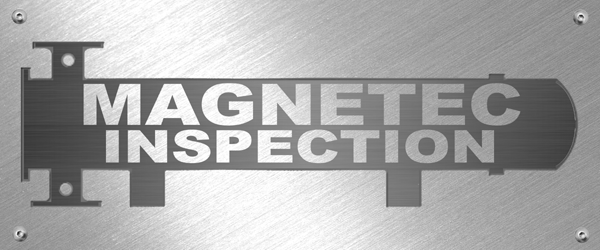




Eddy Current
Eddy Current
It uses a probe with a built-in bobbin coil that induces eddy
currents in adjacent material. Should the probe encounter
flaws as it is pulled through the tube, the eddy currents are
interrupted, causing an impedance change in the coil. The
impedance change is measured and displayed on a monitor.
currents in adjacent material. Should the probe encounter
flaws as it is pulled through the tube, the eddy currents are
interrupted, causing an impedance change in the coil. The
impedance change is measured and displayed on a monitor.
Eddy Current testing is very sensitive to most defects that
occur in tubes. It is critical to use correct eddy current
techniques and procedures for conclusive results.
occur in tubes. It is critical to use correct eddy current
techniques and procedures for conclusive results.
| The three primary techniques are: Differential, Absolute, and Multi-frequency |
| Differential Method: |
| Absolute Method: |
| Multi-frequency Method: |
The Differential Method uses two coils in one
The Absolute Method uses two separate probes,
conducts multiple differential and absolute tests with frequency mix
techniques. This powerful examination combines the defect detection
capabilities of the previous methods into a single, accurate test. It also
provides enhanced defect detection for each type of test through the
use of multiple frequencies sensitive to different types of defects.
techniques. This powerful examination combines the defect detection
capabilities of the previous methods into a single, accurate test. It also
provides enhanced defect detection for each type of test through the
use of multiple frequencies sensitive to different types of defects.
probe to compare adjacent sections of the tube. When both coils are
positioned on sound areas, the signals from both are identical. When one
coil passes over a defect, the instrument compares the differences in the
two signals to evaluate the defect. This method is very sensitive to
defects that cause an abrupt wall section change.
positioned on sound areas, the signals from both are identical. When one
coil passes over a defect, the instrument compares the differences in the
two signals to evaluate the defect. This method is very sensitive to
defects that cause an abrupt wall section change.
one positioned in a known reference tube, the second positioned in the
tube under examination. The instrument compares the signals from the
two probes to detect and evaluate the defects. This method is sensitive
to gradual volumetric changes in the tube wall.
tube under examination. The instrument compares the signals from the
two probes to detect and evaluate the defects. This method is sensitive
to gradual volumetric changes in the tube wall.
The Multi-frequency Method simultaneously
| . |
| ADVANCED TECHNIQUES USE COMPUTER CONTROLLED INSTRUMENTS |

Site Map (Alphabetically)
Contact Info

| Right click on video/Zoom/Full Screen |

| Right click on video/Zoom/Full Screen |

Magnetec Inspection Inc.
1159 East North St.,
Bradley, IL 60915
1159 East North St.,
Bradley, IL 60915
815 802-1363 T
815-802-1238 T
815-802-1250 F
815-802-1238 T
815-802-1250 F
ew@magnetec-inspection.com
admin@magnetec-inspection.com
admin@magnetec-inspection.com
| THE EDDY CURRENT TECHNIQUE |
It is based on the induction of an electromagnetic field in
the component undergoing inspection. It can be applied to
electrically conducive but non-ferromagnetic materials,
and can detect various forms of internal and external
damage to the object being tested.
the component undergoing inspection. It can be applied to
electrically conducive but non-ferromagnetic materials,
and can detect various forms of internal and external
damage to the object being tested.
+
Eddy Current
| Array |



